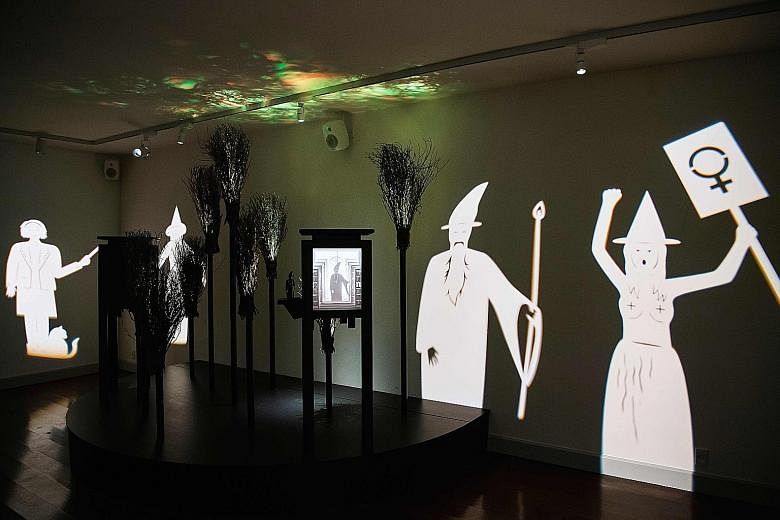RIBE (Denmark) • The fire crackles and a woman shrieks as flames lick her body, burning her alive.
A museum in Denmark is bringing the dark period of witch-hunting to life.
Located in the home of a former witch hunter, the Hex! Museum Of Witch Hunt in the town of Ribe sheds light on how the fear of witches led to a wave of persecution that swept across Denmark and Europe in the 16th and 17th centuries.
While Danish children today dress up as witches and wizards for Halloween, Denmark at the time was a religious and superstitious Lutheran society where fear and distrust were intertwined with the secret use of magic to keep God's wrath at bay.
Across Europe, approximately 100,000 people went on trial for witchcraft, with as many as 50,000 burned, museum historian Louise Hauberg Lindgaard told Agence France-Presse.
Denmark sentenced 1,000 people to death for witchcraft - which, she said, was "quite a lot" given that the country's population was then around one million. Most of those sentenced were women believed to be colluding with the devil.
In comparison, Germany - the country in Europe with the most witch hunts - held 16,500 trials, more than 40 per cent of which ended with the accused being burned at the stake.
Denmark's hostility to witchcraft can be largely attributed to King Christian IV, who lived from 1577 to 1648, Ms Hauberg Lindgaard said.
Under his rule, the country's first legislation against the practice was adopted in 1617, sending black-magic practitioners to the stake.
In the eight years after the law was adopted, persecutions were rampant, with a witch burned every five days.
For the monarch - like many contemporaries, including his brother-in-law King James VI of Scotland and England, also a champion of witch hunts - the persecutions were a way to retain power and project the image of a good Christian caring for his subjects.
Ms Hauberg Lindgaard said monarchs assumed this responsibility after 16th-century French philosopher Jean Bodin declared that if a king did not persecute witches, he was solely responsible for his subjects' misfortune.
At the time, anything could be a pretext for denouncing witches, from an offhand remark to a suspicious charm, and the accused were put on trial.
The museum opened at the end of June, attracting 10,000 visitors in the first month - a strong showing attributed to cool summer weather and the popular subject matter.
"People love to watch and read about all things 'witchy'... such as novels, movies and television series, and the more historic aspects," Ms Hauberg Lindgaard said.
"Interestingly, the 'historic truths' pertaining to the witch-hunt era have since been blurred and reinterpreted by more popular notions of the topic, and we can definitely feel the desire to understand 'what actually happened' among our guests," she said.
Visitors learn that while most witches were women, "up to one in four was a man", she said. They were often "single and living on the edge of society - quite poor".
Brooms, amulets, dolls and other items are on display, as are torture instruments and animated reconstructions of witch trials, accompanied by eerie music.
For 21-year-old Danish visitor Mathilda, the museum was an opportunity to learn more about a period she hardly knows.
"It's very exciting to hear about this stuff. It's something that not only happened here in Denmark but also in a lot of other countries," she said.
The building in which the museum is housed has a history of its own.
It was built in the late 16th century by a witch hunter who played a key role in seven trials, three of which ended with suspects burned at the stake.
The picturesque town of Ribe itself is also hallowed ground. Founded in the Viking era, people once believed it was where witches learnt their craft in the 1600s.
It is also the Danish town that held the most trials per citizen, Ms Hauberg Lindgaard said.
The last person accused of being a witch and burned in Denmark was Anna Bruds in 1652.
AGENCE FRANCE-PRESSE

